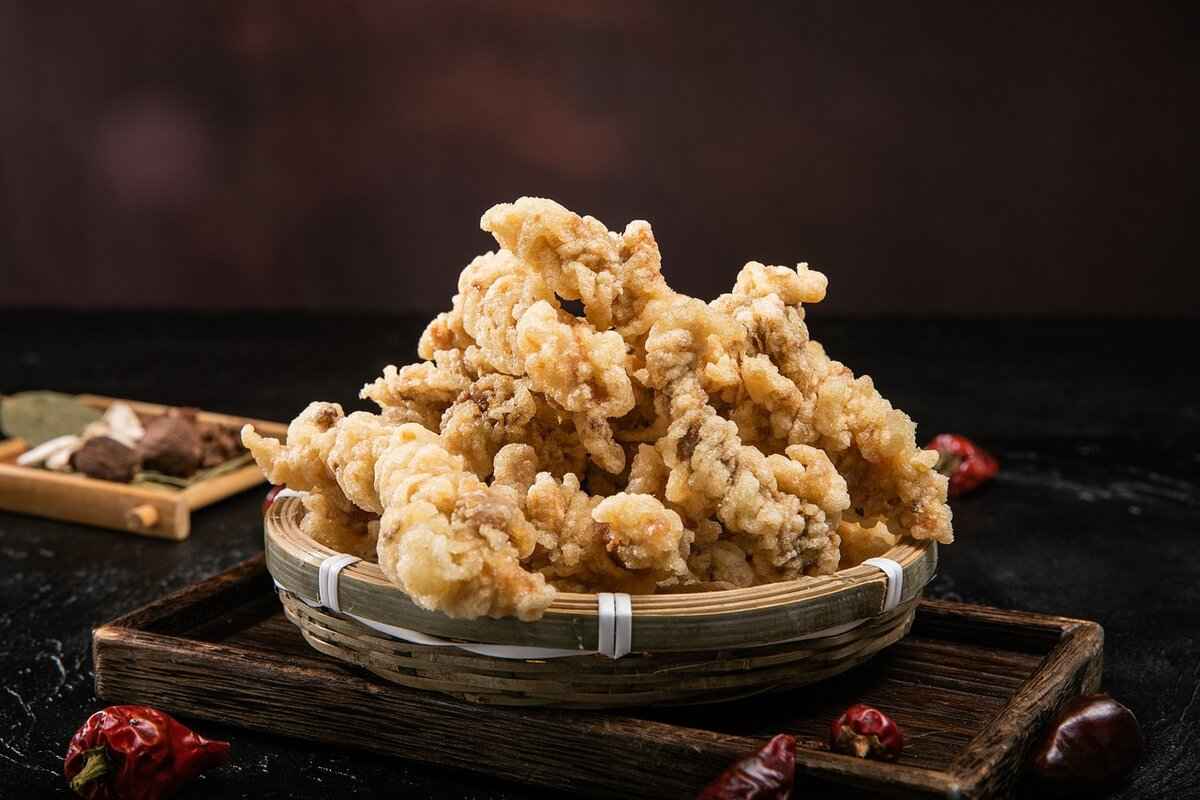This article delves into the rich culinary heritage of Hue, Vietnam, a city renowned for its imperial flavors and unique dishes that reflect the region’s history and culture. Hue’s cuisine is a vibrant tapestry woven from centuries of royal influence, local ingredients, and cultural traditions that continue to thrive today.
Hue cuisine stands out due to its royal heritage and the intricate flavors that characterize its dishes. Influenced by the Nguyen dynasty, the food of Hue is not just about nourishment but also about art and tradition. The city’s chefs have mastered the balance between taste, aesthetics, and cultural significance, making each meal a feast for the senses.
The essence of Hue cuisine lies in its fresh, local ingredients. The region benefits from a diverse agricultural landscape, providing a plethora of herbs, vegetables, and proteins that define its unique flavors.
Herbs and spices are integral to Hue dishes, adding depth and aroma. Commonly used herbs include:
- Mint – Adds a refreshing taste to various dishes.
- Basil – Offers a sweet and slightly peppery flavor.
- Chili – Provides heat and enhances the overall flavor profile.
- Lemongrass – Infuses dishes with a citrusy aroma.
Hue is famous for its variety of unique dishes that reflect its imperial history. Here are some iconic offerings:
Bánh Khoai is a delicious pancake filled with shrimp and vegetables. This dish is not only a culinary delight but also a symbol of Hue’s vibrant street food culture, often enjoyed with a side of fresh herbs and dipping sauce.
Bún Bò Huế is a spicy beef noodle soup that showcases the depth of Hue’s flavors. Its rich broth, made from simmered beef bones and infused with lemongrass and chili, is a comforting staple that has gained popularity beyond Vietnam.
In Hue, food is not just about taste; it’s also about visual appeal. The artistic presentation of dishes is a hallmark of Hue cuisine, where each plate is crafted with care.
Plating techniques in Hue cuisine emphasize elegance and detail. Chefs often arrange ingredients in a way that highlights their colors and textures, making each dish a visual masterpiece.
The use of color and texture in Hue cuisine enhances the dining experience. Vibrant greens from fresh herbs, the golden hue of fried pancakes, and the deep red of chili create a feast for the eyes, elevating the overall enjoyment of the meal.
The dining culture in Hue is rich and varied, reflecting the region’s traditions. Meals are often communal, emphasizing the importance of family and togetherness.
Family-style dining is common in Hue, promoting sharing and togetherness. Dishes are placed in the center of the table, allowing everyone to partake, fostering a sense of community and connection.
Hue’s bustling street food scene offers a diverse array of flavors and experiences. From vendors selling Bánh Mì to stalls offering Gỏi Cuốn (spring rolls), the streets are alive with culinary delights that both locals and tourists cherish.
To truly appreciate Hue cuisine, one must experience it firsthand. Here are some recommendations:
Local restaurants in Hue offer a range of traditional dishes. Some must-visit establishments include:
- Hương Giang – Known for its authentic Huế-style dishes.
- Nhà Hàng Tịnh Tâm – Offers a royal dining experience.
Food tours and cooking classes provide immersive experiences for visitors. Engaging with local chefs and learning traditional cooking methods can deepen one’s appreciation for this rich culinary culture.
As global influences continue to shape culinary trends, Hue cuisine is evolving. The blend of traditional flavors with modern techniques is creating exciting new dishes while preserving the region’s culinary identity.
Fusion cuisine is gaining popularity in Hue, where chefs are experimenting with new flavors while respecting traditional recipes. This innovation keeps the culinary scene dynamic and appealing to younger generations.
Efforts to preserve traditional recipes are vital for maintaining Hue’s culinary identity. Local initiatives aim to safeguard this rich gastronomic heritage, ensuring that future generations can continue to enjoy and celebrate the flavors of Hue.

What Makes Hue Cuisine Unique?
Hue cuisine stands as a testament to the rich history and cultural heritage of Vietnam, particularly during the imperial era. Known for its distinctive flavors, elaborate presentations, and royal influences, Hue’s culinary landscape is both diverse and intricate. This article delves deep into what makes Hue cuisine unique, exploring its historical roots, key ingredients, and the artistic flair that defines its dishes.
The uniqueness of Hue cuisine is deeply rooted in its royal heritage. As the capital of Vietnam during the Nguyen Dynasty, Hue was the epicenter of culinary innovation, where chefs were tasked with preparing meals for the emperor and his court. This royal influence has left an indelible mark on the region’s culinary practices, resulting in a style that emphasizes delicate flavors and artful presentation.
One of the defining characteristics of Hue cuisine is its intricate flavor profiles. Dishes often combine sweet, sour, salty, and spicy elements, creating a harmonious balance that tantalizes the palate. This complexity is achieved through the use of a wide array of local ingredients, many of which are sourced from the surrounding countryside. Fresh herbs, vibrant vegetables, and high-quality proteins are staples in Hue kitchens, ensuring that each dish is not only flavorful but also visually appealing.
Additionally, Hue cuisine is renowned for its artistic presentation. Meals are often served on intricately designed plates, with careful attention paid to color and texture. Chefs take pride in their plating techniques, transforming each dish into a work of art that reflects the region’s cultural identity. The use of vibrant colors, such as the bright greens of fresh herbs and the deep reds of chili, enhances the overall dining experience, making each meal a feast for the eyes as well as the taste buds.
The historical influences that shape Hue cuisine are varied and profound. The city’s status as the imperial capital meant that culinary practices were influenced by royal traditions and the diverse cultures that interacted within its walls. The migration of various ethnic groups into the region brought new ingredients and cooking techniques, further enriching the culinary tapestry of Hue.
Moreover, the city’s proximity to the sea has led to a strong emphasis on seafood in many traditional dishes. Fresh fish, shrimp, and other marine delicacies are commonly featured, often prepared in ways that highlight their natural flavors. This coastal influence, combined with the agricultural bounty of the surrounding areas, ensures that Hue cuisine remains vibrant and varied.
The essence of Hue cuisine lies in its use of fresh, local ingredients. Here are some key components that define the region’s flavors:
- Herbs: Fresh herbs such as mint, basil, and cilantro are essential in many dishes, adding brightness and depth.
- Spices: Spices like chili and lemongrass are commonly used, contributing heat and aromatic qualities.
- Proteins: A variety of meats, including pork, beef, and poultry, as well as seafood, are staples in Hue cooking.
These ingredients are often combined in ways that reflect the region’s culinary philosophy: creating dishes that are not only delicious but also nourishing and visually appealing.
In Hue, food is not merely sustenance; it is an art form. The presentation of dishes is a critical aspect of the dining experience. Chefs employ various plating techniques to ensure that each meal is a visual delight, often using garnishes and colorful ingredients to enhance the overall aesthetic. The careful arrangement of food on the plate reflects the meticulous attention to detail that characterizes Hue cuisine.
In conclusion, the unique qualities of Hue cuisine stem from its rich history, diverse influences, and artistic presentation. Its intricate flavors and emphasis on fresh, local ingredients create a culinary experience that is both memorable and reflective of the region’s cultural heritage. Whether enjoyed in a bustling street market or a refined restaurant, the flavors of Hue promise to transport diners to a world of imperial elegance and gastronomic delight.

Key Ingredients in Hue Dishes
The vibrant culinary landscape of Hue, Vietnam, is a testament to the region’s rich history and cultural diversity. At the heart of Hue cuisine are its fresh, local ingredients that not only define its flavors but also reflect the agricultural bounty of the area. In this section, we will explore the essential components that contribute to the unique taste of Hue dishes, from aromatic herbs to a variety of proteins.
- Herbs and Spices
Herbs and spices are the soul of Hue cuisine, bringing depth and aroma to every dish. The use of fresh herbs is prevalent, with each adding its unique character:
- Mint and Basil: These herbs are staples in many traditional Hue dishes. Mint adds a refreshing taste, while basil contributes a sweet and slightly peppery flavor. They are often used in salads and garnishes, enhancing the overall dining experience.
- Chili and Lemongrass: For those who enjoy a bit of heat, chili is a must. It is often paired with lemongrass, which provides a citrusy note that balances the spiciness. Together, they create a complex flavor profile that is quintessentially Hue.
- Proteins and Seafood
Hue’s culinary offerings are also characterized by a diverse range of proteins and seafood:
- Pork: Various cuts of pork are commonly used, from tenderloin to belly. Dishes like Bánh Bèo (steamed rice cakes) often feature pork, showcasing the meat’s versatility in Hue cooking.
- Seafood: Given Hue’s proximity to the coast, fresh seafood plays a vital role in its cuisine. Shrimp, fish, and squid are frequently featured in local dishes, such as Bánh Khoai, a savory pancake stuffed with shrimp and vegetables.
- Rice and Noodles
Rice is a staple in Vietnamese cuisine, and in Hue, it takes on various forms:
- Rice: Steamed rice is a common accompaniment to many meals, but it is also transformed into rice paper used for wraps and rolls.
- Noodles: Hue is famous for its unique noodle dishes, particularly Bún Bò Huế, a spicy beef noodle soup that highlights the region’s bold flavors.
Each ingredient in Hue cuisine is carefully selected to enhance the overall flavor profile of the dishes. The emphasis on freshness and local sourcing not only supports local farmers but also ensures that the culinary traditions of Hue are preserved and celebrated. Understanding these key ingredients provides a deeper appreciation for the intricate flavors that define Hue’s culinary landscape.
Herbs and Spices
are the heart and soul of Hue cuisine, infusing each dish with distinctive aromas and flavors that transport diners to the rich cultural landscape of Central Vietnam. The use of these aromatic ingredients is not merely a matter of taste; it is a reflection of the region’s history, traditions, and the artistry of its culinary practitioners. In this section, we will explore the most commonly used herbs and spices in Hue dishes and how they enhance the overall dining experience.
In Hue, the incorporation of herbs and spices is vital for creating a balance of flavors. The region’s dishes are known for their complexity, often featuring a harmonious blend of sweet, sour, salty, and spicy elements. This balance is achieved through the careful selection and use of fresh herbs and spices, each contributing its unique character.
- Mint: This herb adds a refreshing note to various dishes, particularly in salads and spring rolls.
- Basil: Often used in soups and stir-fries, basil enhances the flavor profile with its sweet and slightly peppery taste.
- Cilantro: A staple in many Vietnamese dishes, cilantro adds a fresh, citrusy flavor that brightens up the overall taste.
- Perilla: Known for its unique flavor, perilla leaves are often paired with grilled meats and used in wraps.
- Green Onions: Chopped green onions provide a mild onion flavor and are commonly used as a garnish.
Along with herbs, spices play a crucial role in shaping the unique flavors of Hue dishes. Here are some of the most significant spices:
- Chili: This fiery spice is essential for adding heat to many Hue dishes, such as Bún Bò Huế (spicy beef noodle soup).
- Lemongrass: With its citrusy aroma, lemongrass is often used in marinades and soups, providing a fresh and zesty flavor.
- Ginger: Ginger adds warmth and depth to dishes, enhancing both flavor and aroma.
- Turmeric: Known for its vibrant yellow color, turmeric is used in various dishes, imparting a subtle earthy flavor.
- Star Anise: This spice is often used in broths and soups, lending a sweet and aromatic flavor that is characteristic of Hue cuisine.
The preparation of Hue dishes often involves a meticulous process where herbs and spices are expertly combined. For instance, fresh herbs may be used as garnishes, while spices are incorporated into marinades or broths. This careful layering of flavors not only enhances the taste but also elevates the visual appeal of the dish.
The use of herbs and spices in Hue cuisine is deeply rooted in the local culture and traditions. Many families have their own secret blends and techniques passed down through generations, reflecting their unique culinary heritage. This connection to the past is what makes each dish a celebration of Hue’s rich history.
In conclusion, the vibrant array of herbs and spices in Hue cuisine is not just about flavor; it is about creating an experience that engages all the senses. Each ingredient tells a story, inviting diners to explore the intricate tapestry of flavors that define this remarkable culinary tradition.
Mint and Basil
Mint and basil are not just ordinary herbs; they are vital components that elevate the culinary experience in Hue, Vietnam. Renowned for their aromatic qualities and fresh flavors, these herbs play a significant role in many traditional dishes, contributing to the region’s unique gastronomic identity.
In Hue cuisine, the use of fresh herbs is integral to achieving the perfect balance of flavors. Mint offers a refreshing coolness, while basil adds a slightly sweet and peppery taste. Together, they create a harmonious blend that enhances the overall dish. But how exactly are these herbs utilized in traditional recipes?
Many iconic dishes from Hue showcase the vibrant flavors of mint and basil. Here are a few examples:
- Gỏi Cuốn (Spring Rolls): These fresh spring rolls are filled with shrimp, vermicelli noodles, and an assortment of vegetables, including mint and basil. The herbs are essential for providing a burst of flavor that complements the other ingredients.
- Bánh Xèo (Vietnamese Pancakes): This savory pancake is made from rice flour and often contains shrimp, pork, and bean sprouts. Fresh mint and basil are served as accompaniments, allowing diners to wrap the pancake in the herbs for added freshness.
- Phở Huế (Hue-style Pho): This famous noodle soup is typically garnished with fresh herbs, including mint and basil. The herbs not only enhance the dish’s aroma but also contribute to its complex flavor profile.
Incorporating mint and basil into your cooking can be simple and rewarding. Here are some practical tips:
- Freshness is Key: Always use fresh herbs for the best flavor. Look for vibrant green leaves without any signs of wilting.
- Balance the Flavors: When using mint and basil, consider the overall flavor profile of your dish. These herbs work best when they complement rather than overpower other ingredients.
- Experiment with Pairings: Don’t hesitate to mix mint and basil with other herbs and spices. They pair beautifully with cilantro, lemongrass, and chili, creating a more complex flavor.
Beyond their culinary uses, mint and basil also offer a variety of health benefits. Mint is known for its digestive properties and can help soothe an upset stomach. Basil, on the other hand, is rich in antioxidants and has anti-inflammatory properties. Incorporating these herbs into your diet can not only enhance flavor but also contribute to overall well-being.
In summary, mint and basil are indispensable in Hue cuisine, providing freshness and a burst of flavor in a variety of traditional dishes. By understanding their uses and benefits, you can appreciate the depth of flavor they bring to the table. Whether you’re enjoying a bowl of Phở Huế or wrapping a Gỏi Cuốn, these herbs are sure to enhance your culinary experience.
Chili and Lemongrass
are two quintessential ingredients that embody the vibrant essence of Hue cuisine. These components not only add flavor but also tell a story of the region’s culinary heritage, which is steeped in tradition and culture.
Hue cuisine is renowned for its ability to balance spiciness and freshness. Chili, with its fiery heat, is a staple that elevates dishes, while lemongrass introduces a refreshing citrus note that complements the overall flavor profile. Together, they create a harmonious blend that is both invigorating and satisfying.
Chili peppers are not merely a source of heat; they also contribute a depth of flavor that is critical in many traditional dishes. The use of fresh chili in recipes like Bún Bò Huế (spicy beef noodle soup) adds a layer of complexity, enhancing the dish’s savory elements. The heat from the chili stimulates the palate, making each bite an exciting experience.
Lemongrass, on the other hand, plays a pivotal role in balancing the heat of chili. Its citrusy aroma brings a refreshing quality that cuts through rich flavors, making it an ideal companion in soups and marinades. In dishes such as Gỏi Cuốn (fresh spring rolls), lemongrass not only adds flavor but also enhances the dish’s aroma, making it more appealing.
The incorporation of chili and lemongrass in Hue cuisine reflects the region’s historical influences, including the blending of indigenous flavors with those introduced during the imperial era. This fusion has led to a unique culinary identity that celebrates both heat and freshness.
- Chili: Rich in vitamins A and C, chili is known for its metabolism-boosting properties and ability to enhance circulation.
- Lemongrass: Packed with antioxidants, lemongrass is celebrated for its anti-inflammatory and detoxifying effects.
Integrating chili and lemongrass into your cooking is simple. Here are a few tips:
1. Use fresh chili in marinades for meats or seafood.2. Add chopped lemongrass to soups for a burst of flavor.3. Experiment with chili oil as a condiment for dipping sauces.4. Infuse lemongrass in teas or cocktails for a refreshing twist.
To truly appreciate the flavors of chili and lemongrass, visiting local eateries in Hue is a must. Many restaurants offer traditional dishes that highlight these ingredients, allowing you to experience the authentic taste of the region.
In summary, the combination of chili and lemongrass is fundamental to the distinctive taste of Hue cuisine. Their ability to create a balance between heat and freshness not only enhances the flavors of dishes but also reflects the rich culinary traditions of this vibrant region.
Proteins and Seafood
are fundamental components of Hue cuisine, contributing to its rich flavors and diverse dishes. The selection of meats and seafood not only reflects the region’s geographical bounty but also its cultural significance. In this section, we will explore the most popular proteins and seafood used in traditional Hue cooking, highlighting their roles and the unique flavors they bring to the table.
Hue’s culinary landscape is heavily influenced by its history as the capital of Vietnam during the Nguyen Dynasty. The royal kitchens of Hue were known for their elaborate meals, often featuring a variety of meats and seafood that catered to the tastes of emperors and their courts. Among the most favored proteins are:
- Pork: Often used in various forms, from marinated grilled pork to rich pork belly, it is a staple in many dishes.
- Beef: Known for its robust flavor, beef is commonly used in soups and stir-fries, with Bún Bò Huế being a notable example.
- Poultry: Chicken and duck are popular choices, often prepared in traditional recipes that highlight their tenderness and flavor.
When it comes to seafood, the coastal proximity of Hue provides access to a variety of fresh options. The seafood used in Hue dishes includes:
- Shrimp: A key ingredient in many local specialties, shrimp is often featured in Bánh Khoai and various soups, adding a sweet and savory element.
- Fish: Commonly used varieties include catfish and tilapia, which are often grilled or steamed and served with vibrant dipping sauces.
- Squid: This versatile seafood is frequently incorporated into stir-fries and salads, offering a chewy texture that complements other ingredients.
In addition to their flavors, the choice of proteins and seafood in Hue cuisine also reflects the region’s commitment to freshness and quality. Local markets abound with fresh produce, ensuring that the ingredients used in cooking are of the highest standard. This emphasis on quality not only enhances the taste of the dishes but also supports local fishermen and farmers.
Moreover, the preparation of proteins and seafood in Hue is often accompanied by a variety of herbs and spices, such as lemongrass, ginger, and chili, which elevate the dishes and create a harmonious balance of flavors. For instance, the use of lemongrass in marinating meats imparts a fragrant aroma, while chili adds a delightful heat that is characteristic of Hue cuisine.
Another important aspect of Hue’s culinary tradition is the art of presentation. Dishes are often served in an aesthetically pleasing manner, showcasing the vibrant colors of the ingredients. This attention to detail not only enhances the dining experience but also reflects the cultural significance of food in Vietnamese society.
As we delve deeper into the world of Hue cuisine, it becomes clear that the choice of proteins and seafood is not merely about sustenance; it is a celebration of the region’s rich heritage and its connection to the land and sea. The flavors, textures, and visual appeal of these ingredients come together to create a dining experience that is both satisfying and memorable.
In conclusion, understanding the role of proteins and seafood in Hue cooking allows us to appreciate the complexity and depth of this unique culinary tradition. From the selection of fresh ingredients to the intricate preparation methods, each dish tells a story of cultural significance and historical legacy, inviting everyone to partake in the flavors of Hue.
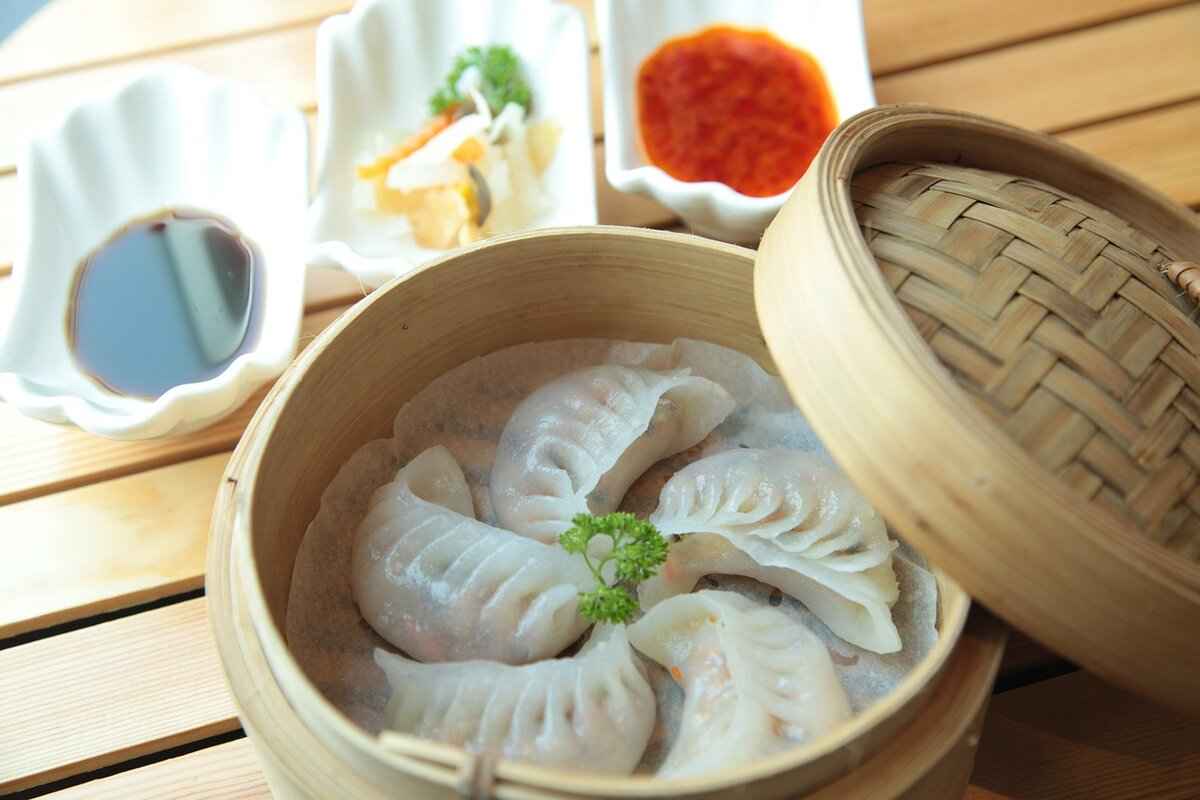
Signature Dishes of Hue
Hue, a city steeped in history and culture, is renowned for its signature dishes that embody the essence of Vietnamese imperial cuisine. The culinary offerings of Hue are not merely meals; they are a reflection of the city’s rich heritage and artistry. Below, we delve into some of the most iconic dishes that define Hue’s gastronomic landscape.
- Bánh Khoai: Often referred to as the Hue pancake, this dish is a delightful combination of shrimp, pork, and an array of vegetables encased in a crispy rice flour batter. Served with a tangy dipping sauce, Bánh Khoai is a favorite among locals and visitors alike.
- Bún Bò Huế: This spicy beef noodle soup is a hallmark of Hue cuisine. Characterized by its rich broth infused with lemongrass, chili, and various spices, Bún Bò Huế showcases tender beef shank and is garnished with fresh herbs, creating a harmonious balance of flavors.
- Nem Lụi: These grilled pork skewers are served with rice paper and fresh vegetables, allowing diners to create their own rolls. The savory pork, marinated with a blend of spices, is complemented by a sweet and tangy dipping sauce, making it a delightful appetizer.
- Chè Huế: A traditional dessert that comes in various forms, Chè Huế is a sweet soup made from beans, fruits, and coconut milk. Its vibrant colors and varied textures make it a visually appealing end to any meal.
- Gỏi Cuốn: Also known as Vietnamese spring rolls, Gỏi Cuốn are fresh rolls filled with shrimp, herbs, and vermicelli noodles. These rolls are typically served with a peanut or hoisin sauce, making them a refreshing choice.
The dishes mentioned above are not just food; they carry stories of tradition and culture. Each recipe has been passed down through generations, often originating from the royal kitchens of the Nguyen Dynasty. The emphasis on fresh ingredients and intricate preparation reflects the city’s historical significance as a cultural hub.
Moreover, the presentation of these dishes is equally important. Hue cuisine is known for its artistic plating, where colors and textures are carefully arranged to create a feast for the eyes as well as the palate. This attention to detail enhances the overall dining experience, making meals in Hue memorable.
To truly savor the flavors of Hue, one must experience these dishes firsthand. Here are some recommendations:
- Local Restaurants: Numerous eateries in Hue specialize in traditional dishes. Look for those that offer a variety of Hue’s signature foods to get the full experience.
- Cooking Classes: Engaging in a cooking class can provide insight into the techniques and ingredients that make Hue cuisine unique. Many local chefs offer classes that allow participants to prepare and enjoy their own meals.
- Food Tours: Joining a food tour can be an excellent way to explore the culinary landscape of Hue. These tours often include visits to local markets and tastings of various dishes, providing a comprehensive overview of the region’s food culture.
In conclusion, the signature dishes of Hue are a celebration of the city’s rich culinary heritage. From the vibrant Bánh Khoai to the comforting Bún Bò Huế, each dish tells a story of tradition, flavor, and artistry. Whether you’re a local or a traveler, indulging in these iconic offerings is essential to understanding the heart and soul of Hue.
Bánh Khoai: The Hue Pancake
Bánh Khoai, the famous Hue pancake, is a delightful dish that encapsulates the essence of Central Vietnamese cuisine. This savory pancake is not only a treat for the taste buds but also a reflection of the rich cultural heritage of Hue. Traditionally made with rice flour, it is filled with a medley of fresh shrimp and vibrant vegetables, making it a popular choice among locals and visitors alike.
The key to a delicious Bánh Khoai lies in its fresh ingredients. Typically, the batter is made from rice flour mixed with water and a pinch of salt. The filling often includes:
- Shrimp – Fresh and succulent, shrimp adds a savory flavor.
- Vegetables – Commonly used vegetables include bean sprouts, onions, and sometimes mushrooms, adding crunch and nutrition.
- Herbs – Fresh herbs like cilantro and mint enhance the overall taste profile.
The preparation of Bánh Khoai is an art form that requires skill and patience. First, the batter is poured into a hot skillet, creating a thin layer. Once the edges begin to crisp, the filling is added, and the pancake is folded in half, allowing the ingredients to meld together. It is then cooked until golden brown and served hot.
Bánh Khoai is more than just a pancake; it holds significant cultural importance in Hue. It is often enjoyed during family gatherings and celebrations, symbolizing togetherness and sharing. The dish is also frequently served with a side of nuoc cham, a tangy dipping sauce made from fish sauce, lime, and chili, which adds an extra layer of flavor.
If you’re looking to experience authentic Bánh Khoai, Hue is the place to be. Numerous street vendors and local restaurants specialize in this dish. Some popular spots include:
- Bánh Khoai Hương – Known for its crispy texture and generous fillings.
- Bánh Khoai Huyền – A family-run establishment that has been serving this delicacy for generations.
For anyone visiting Hue, Bánh Khoai is a must-try dish that showcases the region’s culinary prowess. Its combination of fresh ingredients, unique preparation methods, and rich cultural significance makes it a standout offering in the diverse landscape of Vietnamese cuisine. Whether enjoyed as a snack or a main dish, Bánh Khoai promises a delightful culinary experience that is sure to leave a lasting impression.
Huế-style Noodles (Bún Bò Huế)
Bún Bò Huế, often hailed as one of the most iconic dishes of Vietnam, is a spicy beef noodle soup that captures the essence of Hue’s rich culinary heritage. This dish not only tantalizes the taste buds but also tells a story of the region’s history and culture. In this article, we will explore the unique ingredients, traditional serving methods, and the reasons behind the dish’s popularity.
The heart of Bún Bò Huế lies in its carefully selected ingredients. Each component plays a crucial role in creating the dish’s signature flavor profile.
- Beef: Typically, a combination of brisket, shank, and sometimes beef bones is used to create a rich broth.
- Noodles: The dish features bún, which are round rice noodles that absorb the flavorful broth beautifully.
- Herbs: Fresh herbs such as mint, basil, and coriander are essential for garnishing and adding freshness.
- Spices: The broth is flavored with lemongrass, chili, and fish sauce, which give it a distinctive aroma and heat.
Traditionally, Bún Bò Huế is served in a large bowl, often accompanied by a side of fresh vegetables and herbs. The soup is typically garnished with:
- Sliced onions and green onions
- Chili slices for those who prefer extra heat
- Lime wedges to enhance the flavors
This communal aspect of serving encourages diners to customize their bowls, adding herbs and lime according to personal preference.
Bún Bò Huế is more than just a meal; it is a cultural experience. The dish reflects the imperial history of Hue, where flavors are layered and complexity is celebrated. The preparation of Bún Bò Huế often involves a meticulous process, with chefs taking great care to balance the flavors of the broth.
Additionally, the dish is deeply embedded in the social fabric of Hue. It is commonly enjoyed during family gatherings and celebrations, making it a symbol of togetherness and community.
For those looking to experience authentic Bún Bò Huế, numerous local eateries and street vendors in Hue offer this beloved dish. Some popular spots include:
- Bún Bò Huế O Xuân – Renowned for its rich broth and generous portions.
- Bún Bò Huế Hương Giang – A favorite among locals for its authentic taste and vibrant atmosphere.
Visiting these establishments not only allows you to savor the dish but also to immerse yourself in the local dining culture.
In conclusion, Bún Bò Huế is a dish that encapsulates the flavors and traditions of Hue. With its bold spices, fresh ingredients, and rich cultural significance, it stands as a testament to the culinary artistry of Vietnam. Whether enjoyed in a bustling street market or a quiet family setting, Bún Bò Huế offers a delicious glimpse into the heart of Hue’s gastronomic heritage.
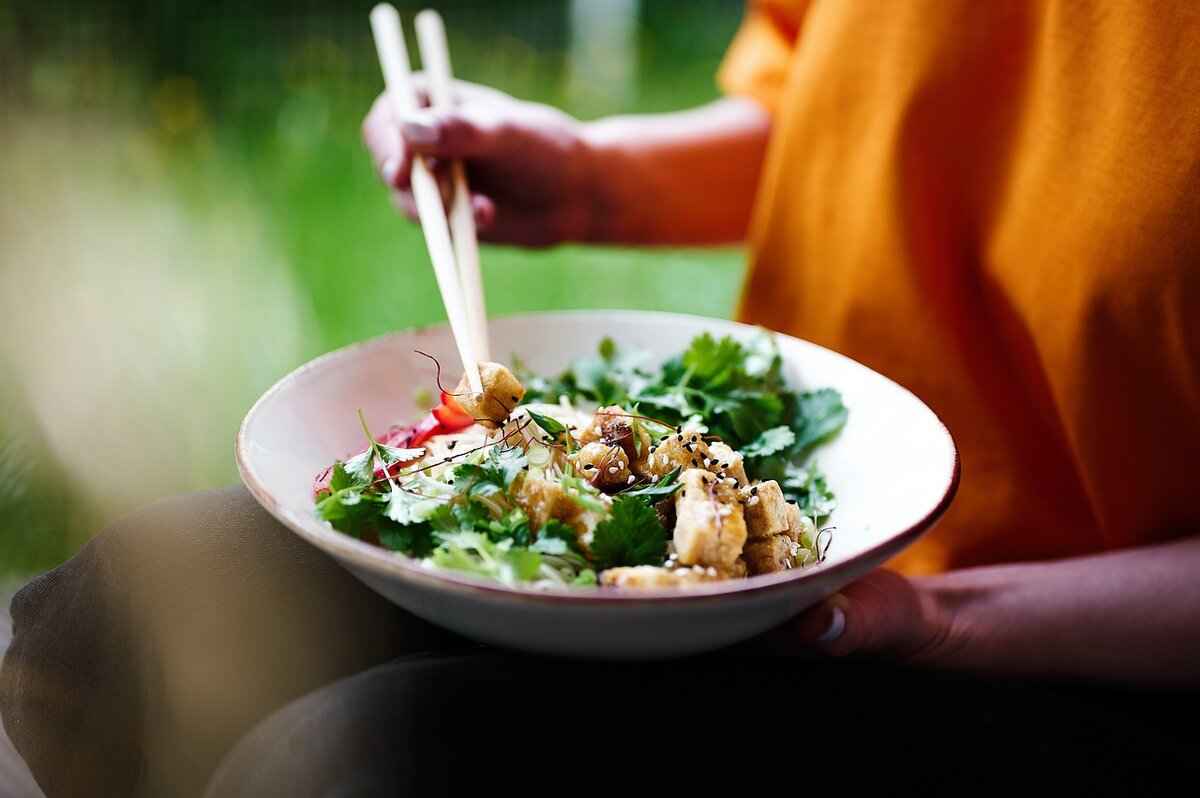
The Role of Presentation in Hue Cuisine
In the vibrant culinary landscape of Hue, Vietnam, the art of presentation is as essential as the flavors that tantalize the palate. This city, steeped in imperial history, transforms every meal into a feast for the eyes, making dining an experience that engages all the senses.
The significance of presentation in Hue cuisine goes beyond mere aesthetics; it reflects the region’s rich cultural heritage and the meticulous care that chefs put into their dishes. Visual appeal enhances the overall dining experience, inviting diners to appreciate the artistry involved in each creation. A beautifully presented dish can evoke emotions, spark conversations, and create lasting memories.
Chefs in Hue employ a variety of plating techniques to elevate their dishes. These methods often include:
- Layering: Ingredients are carefully layered to create depth and dimension.
- Garnishing: Fresh herbs, edible flowers, and colorful sauces are used to enhance visual appeal.
- Symmetry: Many dishes are arranged in a balanced manner, drawing the eye and creating harmony on the plate.
Each technique is thoughtfully applied, ensuring that the dish not only tastes exceptional but also looks stunning.
In Hue cuisine, color and texture play a pivotal role in the overall enjoyment of a meal. The vibrant colors of fresh ingredients, such as deep greens from herbs, bright reds from chilies, and earthy tones from proteins, create an inviting visual palette. Additionally, the interplay of textures—from the crispness of vegetables to the tenderness of meats—adds another layer of sensory delight.
For instance, a dish like Bánh Khoai (Hue pancakes) not only bursts with flavor but also showcases a beautiful contrast between the golden batter and the colorful filling of shrimp and vegetables. This attention to color and texture makes each bite an adventure.
The artistic presentation of Hue dishes is often inspired by the region’s imperial history and natural surroundings. Traditional motifs, such as lotus flowers and bamboo, are frequently incorporated into the design of the dishes, reflecting the harmonious relationship between nature and cuisine in Vietnamese culture.
In Hue, the way food is presented also ties into the cultural dining etiquette. Meals are often served in a way that encourages sharing and communal enjoyment. The visual allure of the dishes invites diners to engage with one another, fostering a sense of togetherness. This communal aspect is crucial in Vietnamese culture, where meals are a time for family and friends to connect.
Moreover, the presentation of dishes can signal the significance of a meal. For special occasions, chefs may go above and beyond, creating elaborate displays that showcase their culinary skills and honor the event being celebrated.
In summary, the role of presentation in Hue cuisine is integral to the overall dining experience. By combining artistic plating techniques, vibrant colors, and thoughtful textures, chefs create dishes that are not only delicious but also visually captivating. This commitment to presentation reflects the cultural heritage of Hue and enhances the communal joy of sharing a meal, making it a truly unique culinary experience.
Plating Techniques
in Hue cuisine are more than just a means of presenting food; they are an art form that reflects the region’s rich cultural heritage and culinary sophistication. Chefs in Hue meticulously craft their dishes to not only please the palate but also to create a visual feast that captivates the eyes. This emphasis on elegance and detail transforms each meal into a memorable experience, showcasing the skill and creativity of the chef.
In Hue, the presentation of food is as important as its taste. Several key aspects define the plating techniques used by chefs:
- Color Harmony: The use of vibrant colors from fresh ingredients is essential. Chefs often incorporate a variety of vegetables, herbs, and sauces to create a visually appealing palette.
- Texture Contrast: Combining different textures adds depth to the dish. Crisp vegetables might be paired with tender meats, creating a delightful contrast that enhances the overall eating experience.
- Shape and Form: The arrangement of food is carefully considered. Chefs often use circular or layered designs to guide the diner’s eye and create a sense of balance on the plate.
Chefs in Hue employ various techniques to elevate their plating:
- Garnishing: Fresh herbs, edible flowers, and microgreens are commonly used to add a finishing touch that enhances visual appeal.
- Drizzling and Dots: Sauces are often drizzled or dotted around the plate, creating artistic patterns that draw attention to the main components of the dish.
- Layering: Ingredients are layered thoughtfully, allowing diners to experience different flavors and textures with each bite.
The significance of plating in Hue cuisine extends beyond aesthetics. It serves several important purposes:
- Enhances Dining Experience: A beautifully plated dish heightens anticipation and excitement, making the meal more enjoyable.
- Reflects Cultural Heritage: The intricate presentation reflects the region’s royal history and culinary traditions, showcasing the pride and skill of Hue’s chefs.
- Encourages Mindful Eating: When food is presented artfully, it encourages diners to savor each bite, promoting a more mindful approach to eating.
Absolutely! While innate talent plays a role, anyone can learn the fundamentals of plating through practice and observation. Many culinary schools and cooking classes in Hue offer courses focused on plating techniques, allowing aspiring chefs to refine their skills and understand the principles of food presentation.
In conclusion, the in Hue cuisine embody a harmonious blend of artistry and tradition, transforming meals into an unforgettable sensory experience. By emphasizing elegance and detail, Hue’s chefs not only celebrate their culinary heritage but also invite diners to appreciate the beauty of food.
Color and Texture
Hue cuisine is a vibrant tapestry of colors and textures that not only tantalizes the taste buds but also captivates the eyes. The careful selection of ingredients and their artistic presentation play a significant role in enhancing the overall dining experience. In this section, we will explore how color and texture contribute to the enjoyment of meals in Hue, making dining a feast for all the senses.
Color is one of the first things that attract diners to a dish. In Hue cuisine, the use of vivid colors is not just for aesthetics; it signifies freshness and quality of ingredients. Bright greens from herbs, deep reds from chili, and golden yellows from turmeric create a visually appealing plate that invites exploration.
- Fresh Ingredients: The vibrant colors often indicate the use of fresh, seasonal ingredients, which are a hallmark of Hue cooking.
- Cultural Significance: Colors in Hue cuisine can also hold cultural meanings, with certain hues representing prosperity and good fortune.
Texture is equally important, adding another layer of enjoyment to meals. The interplay of different textures—crunchy, creamy, chewy—creates a more dynamic eating experience.
- Contrast: A dish that combines crispy fried elements with soft, tender ingredients can create a delightful contrast that excites the palate.
- Mouthfeel: The texture of food affects how flavors are perceived. For example, a creamy sauce can enhance the richness of a dish, making it more satisfying.
Hue’s signature dishes exemplify the harmonious blend of color and texture. Take, for instance, Bánh Khoai, the Hue pancake. Its golden exterior contrasts beautifully with the vibrant greens of fresh herbs and the pink of shrimp inside, while the crispy outer layer contrasts with the soft filling.
Another prime example is Bún Bò Huế, the spicy beef noodle soup. The bright red chili oil floating on top, combined with the lush greens of herbs and the hearty texture of the noodles, creates a visually stunning and flavorful dish.
Chefs in Hue are trained to appreciate the importance of color and texture. They skillfully arrange ingredients to create a balanced and appealing presentation. This meticulous attention to detail not only enhances the visual aspect but also influences the overall sensory experience of the diner.
- Artful Plating: Chefs often use techniques that highlight the natural colors of the ingredients, arranging them in a way that draws the eye.
- Layering Textures: By layering ingredients with different textures, chefs create dishes that are not only visually appealing but also exciting to eat.
In summary, the use of color and texture in Hue cuisine is essential for enhancing the dining experience. These elements contribute to the overall enjoyment of the meal, making it a multi-sensory adventure. As diners engage with the vibrant colors and varied textures, they are invited to appreciate not just the flavors but also the artistry that defines Hue’s culinary heritage.
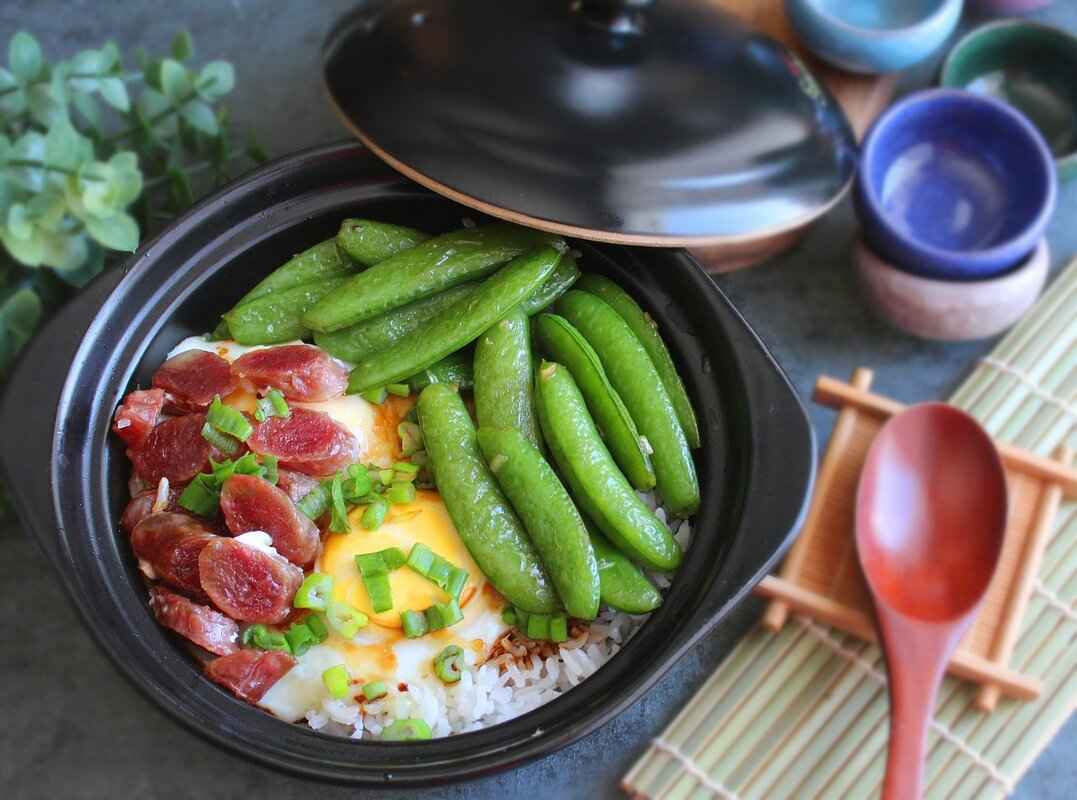
Dining Culture in Hue
The dining culture in Hue is a vibrant tapestry woven from the region’s rich history, traditions, and communal values. Renowned for its imperial cuisine, Hue offers a unique dining experience that goes beyond mere sustenance. This article delves into the customs and practices surrounding meals in Hue, highlighting what makes dining in this city a memorable affair.
Dining in Hue is characterized by a strong sense of community and tradition. Meals are often shared among family and friends, fostering bonds and creating a sense of togetherness. The culinary experience is not just about the food; it encompasses the entire atmosphere, from the table setting to the rituals that accompany each meal.
One of the most distinctive aspects of dining in Hue is the family-style approach. Dishes are typically served in large portions, allowing diners to share and sample a variety of flavors. This practice not only promotes a sense of unity but also encourages conversation and connection among diners. Meals often begin with a ceremonial toast, symbolizing goodwill and appreciation for the food and company.
Hue’s street food scene is a vibrant reflection of its culinary diversity. Stalls and vendors line the streets, offering an array of delectable options that cater to both locals and tourists. Popular street foods include Bánh Bèo (steamed rice cakes), Bánh Khoai (Hue pancakes), and Nem Lụi (grilled pork skewers). Each dish is crafted with fresh ingredients and showcases the region’s unique flavors.
In Hue, dining rituals play a significant role in enhancing the meal experience. For instance, before meals, it is customary to express gratitude to the ancestors, acknowledging their presence and blessings. This practice reinforces the cultural significance of meals and highlights the respect for family heritage.
Hue’s dining culture is also influenced by seasonal celebrations and festivals. During special occasions, families prepare traditional dishes that hold cultural significance. For example, during the Lunar New Year, dishes like Bánh Chưng (square sticky rice cake) are prepared as symbols of prosperity and unity.
Understanding dining etiquette is essential for anyone wishing to immerse themselves in Hue’s culinary culture. It is polite to wait for the eldest person to start eating before others join in. Additionally, using chopsticks correctly is important; for instance, never stick them upright in a bowl of rice, as this resembles incense offerings at funerals.
- Local Restaurants: Many local eateries serve traditional Hue dishes, allowing diners to experience authentic flavors.
- Street Food Tours: Joining a street food tour can provide an insider’s view of the best local vendors and their specialties.
- Cooking Classes: Participating in cooking classes offers a hands-on approach to learning about Hue’s culinary techniques and ingredients.
In conclusion, the dining culture in Hue is a rich blend of tradition, community, and flavor. Whether enjoying a family-style meal or exploring the bustling street food scene, visitors to Hue will find themselves immersed in a culinary experience that reflects the heart and soul of this historic city.
Family-style Dining
is a cherished tradition in Hue, deeply embedded in the cultural fabric of this vibrant city. This communal way of eating not only enhances the flavor of the food but also fosters a sense of togetherness and connection among family and friends.
In Hue, meals are often served on large platters, allowing diners to share dishes rather than ordering individually. This practice encourages interaction and conversation, making meals a social event rather than just a necessity. Diners are invited to take what they like, creating a dynamic dining experience where everyone participates in the meal’s enjoyment.
Family-style dining is popular in Hue for several reasons:
- Tradition: Rooted in the region’s history, this dining style reflects the communal values of Vietnamese culture.
- Variety: Sharing allows diners to experience a wider array of flavors and dishes, showcasing the rich culinary heritage of Hue.
- Connection: Meals shared among loved ones strengthen bonds and create lasting memories.
During family-style meals in Hue, you might encounter a plethora of traditional dishes:
| Dish | Description |
|---|---|
| Bánh Khoai | A savory pancake filled with shrimp and vegetables, often served with a tangy dipping sauce. |
| Bún Bò Huế | A spicy beef noodle soup that is rich in flavor and typically garnished with fresh herbs. |
| Nem Lụi | Grilled pork skewers served with rice paper, fresh vegetables, and a delightful dipping sauce. |
The family-style dining experience in Hue is not just about sharing food; it is about sharing stories, laughter, and moments. The act of passing dishes around the table encourages communication and strengthens relationships. Moreover, the vibrant atmosphere of a family-style meal allows for a more relaxed and enjoyable dining experience.
In Hue, the dining table often becomes a gathering place where family members, friends, and even neighbors come together. This sense of community is palpable, as everyone contributes to the meal in some way, whether through cooking, serving, or simply enjoying the food together.
Food plays a central role in family gatherings in Hue. Each dish served carries its own significance and often has a story behind it. For instance, traditional recipes are frequently passed down through generations, and their preparation can be a ritual in itself. This not only preserves culinary heritage but also reinforces family bonds.
Moreover, the flavors of Hue cuisine are meant to be savored collectively. The act of sharing enhances the flavors, as diners engage with the food and each other, creating a rich tapestry of experiences that go beyond mere sustenance.
In conclusion, family-style dining in Hue is much more than a meal; it is a celebration of culture, community, and connection. It embodies the spirit of togetherness that is so integral to Vietnamese life, making every dining experience a cherished memory.
Street Food Scene
Hue’s street food scene is a vibrant tapestry of flavors, aromas, and cultural experiences. This bustling culinary landscape offers a wide array of options that attract both locals and tourists alike, creating a unique gastronomic adventure in the heart of Vietnam.
Hue’s street food is deeply rooted in its historical significance and cultural diversity. Unlike other regions in Vietnam, Hue’s offerings reflect its imperial past, with dishes that are not only delicious but also visually appealing. The street food scene here is characterized by its intricate flavors and artful presentations.
Visitors to Hue will find an abundance of street food options. Here are some of the most popular choices:
- Bánh Bèo: Small steamed rice cakes topped with shrimp and pork cracklings, served with a tangy dipping sauce.
- Bánh Khoai: A crispy pancake filled with shrimp and vegetables, often enjoyed with fresh herbs.
- Nem Lui: Grilled pork skewers served with rice paper, fresh vegetables, and a rich peanut sauce.
- Bún Bò Huế: A spicy beef noodle soup that showcases the depth of Hue’s flavors, often garnished with herbs and lime.
The street food scene in Hue is best experienced in local markets and bustling street corners. Here are some popular spots:
- Dong Ba Market: A hub for local vendors offering a variety of street food options, from savory snacks to sweet treats.
- Le Loi Street: Known for its vibrant street food stalls, this area is perfect for trying different dishes in one go.
- Tran Hung Dao Street: A popular destination for tourists and locals alike, offering a mix of traditional and modern street food.
Eating street food in Hue is not just about the food; it’s about the experience. The lively atmosphere, with vendors calling out to customers and the aroma of grilled meats filling the air, creates an unforgettable ambiance. Many locals enjoy their meals while seated on small plastic stools, fostering a sense of community and interaction.
To make the most of your street food experience in Hue, consider the following tips:
- Try a Variety: Don’t hesitate to sample multiple dishes to get a true taste of Hue’s culinary diversity.
- Ask Locals: Engage with locals to discover hidden gems and popular stalls that may not be in tourist guides.
- Stay Hydrated: With the warm climate, make sure to drink plenty of water, especially if you’re enjoying spicy dishes.
Hue’s street food scene is a must-visit for anyone looking to explore the rich flavors and culture of Vietnam. With its diverse offerings and vibrant atmosphere, every bite tells a story of tradition and innovation. Whether you’re a seasoned foodie or a curious traveler, the streets of Hue promise a culinary adventure that is both delightful and memorable.
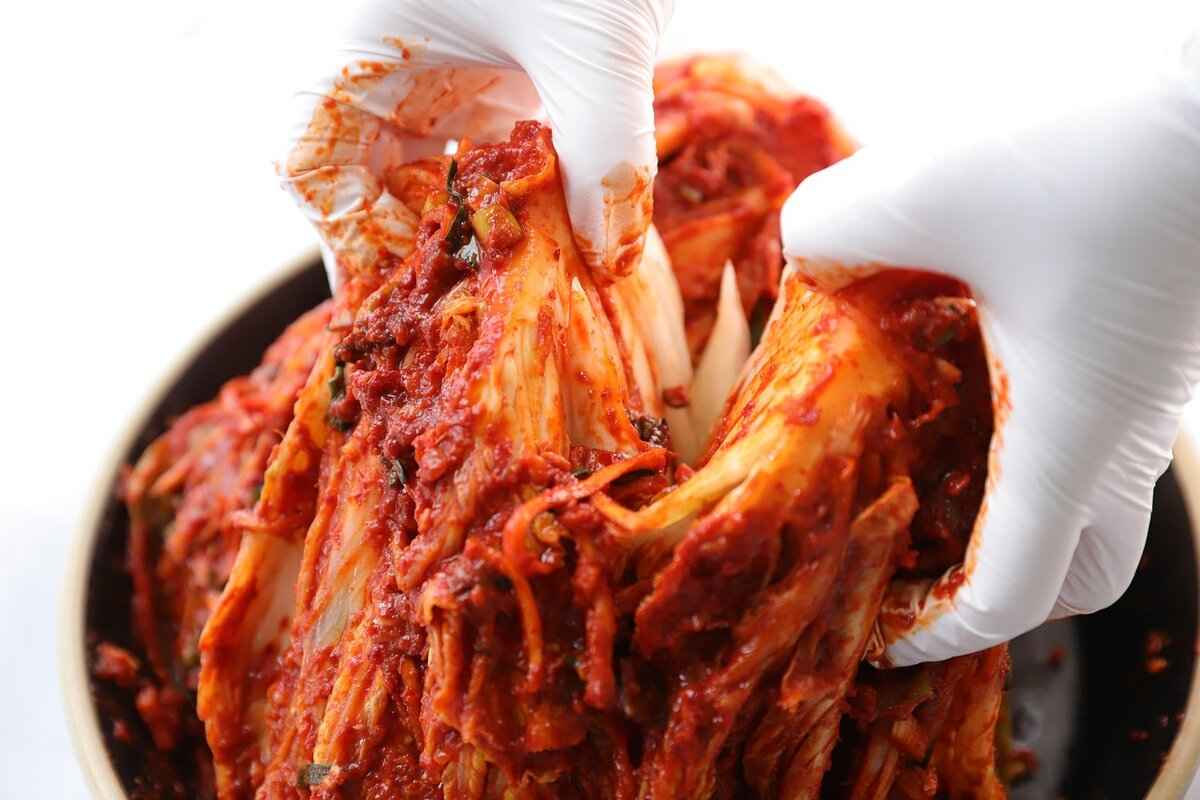
Where to Experience Hue Cuisine
When it comes to experiencing the rich and diverse flavors of Hue cuisine, nothing beats the opportunity to savor these dishes in their native setting. Hue, the former imperial capital of Vietnam, is renowned for its culinary heritage, which reflects the region’s history and culture. To truly appreciate this cuisine, one must explore the local eateries, bustling street food stalls, and engaging cooking classes that bring these flavors to life.
Local restaurants in Hue are treasure troves of traditional dishes that have been passed down through generations. Here are some recommendations:
- Hanh Restaurant – Known for its Bún Bò Huế, this restaurant offers a cozy atmosphere and a menu filled with classic Hue dishes.
- Quoc Toan Restaurant – A favorite among locals, Quoc Toan specializes in Bánh Khoai and other regional specialties, served with a side of fresh herbs.
- Thien Duong Restaurant – This establishment is famous for its royal-style dishes, providing a glimpse into the culinary traditions of the Nguyen dynasty.
The street food scene in Hue is vibrant and diverse, offering an authentic taste of the city’s culinary landscape. Here are some popular options:
- Nem Lui – Grilled pork skewers wrapped in rice paper, served with fresh herbs and a tangy dipping sauce.
- Bánh Bèo – Steamed rice cakes topped with shrimp and scallions, often served with a side of fish sauce for dipping.
- Xôi – Sticky rice dishes, often flavored with mung beans or served with savory toppings, perfect for a quick snack.
For those looking to dive deeper into the world of Hue cuisine, food tours and cooking classes offer immersive experiences:
- Hue Street Food Tour – Join a guided tour that takes you through the bustling streets, sampling various dishes while learning about their history and preparation.
- Cooking Classes – Participate in hands-on cooking classes where you can learn to make traditional dishes like Gỏi Cuốn (spring rolls) and Chả Cá (fish cakes) under the guidance of local chefs.
Visiting Hue to experience its cuisine is not just about the food; it’s about the atmosphere, the stories behind each dish, and the community that surrounds it. Expect to:
- Immerse yourself in the rich history of the region, as many dishes are tied to the imperial past of Hue.
- Engage with passionate chefs and locals who are eager to share their culinary secrets and traditions.
- Discover unique flavors and combinations that are exclusive to Hue, offering a culinary experience that is both unique and memorable.
In conclusion, experiencing Hue cuisine firsthand is a journey through the flavors, history, and culture of this remarkable city. Whether you choose to dine at local restaurants, explore street food stalls, or participate in cooking classes, each experience will deepen your appreciation for the culinary artistry that defines Hue.
Local Restaurants
When it comes to experiencing the vibrant culinary scene of Hue, play a crucial role in showcasing the region’s rich heritage. Hue is renowned for its unique flavors, influenced by its imperial past, and the local dining establishments are the perfect gateway to explore this gastronomic landscape.
Visiting in Hue allows you to immerse yourself in the authentic flavors of the region. These establishments not only serve traditional dishes but also provide a glimpse into the culture and history that shape Hue’s culinary identity. Each bite tells a story, making dining here a memorable experience.
Here are some of the top local restaurants you should consider when exploring Hue’s culinary offerings:
- Nha Hang Hoa Vien: Known for its traditional Bún Bò Huế, this restaurant is a favorite among locals and tourists alike. The rich broth and tender beef make it a must-try.
- Com Hen: Specializing in clam rice, this eatery offers a unique twist on a classic dish. The combination of clams, rice, and various herbs creates a delightful explosion of flavors.
- Bánh Khoai Restaurant: This place is famous for its Bánh Khoai, a crispy pancake filled with shrimp and vegetables. The dish is not only delicious but also a feast for the eyes.
- Quán Ăn Ngon: A popular spot for tourists, this restaurant serves a variety of traditional dishes, including Nem Lụi and Gỏi Cuốn. The atmosphere is vibrant, making it a great place to enjoy a meal with friends.
Dining in Hue is not just about the food; it is also about the experience. Most local restaurants offer a warm and inviting atmosphere, reflecting the hospitality of the Vietnamese people. You can expect:
- Family-style meals: Many restaurants serve food in a communal style, encouraging sharing and togetherness among diners.
- Artistic presentation: Hue cuisine is known for its beautiful plating. Expect dishes to be served with an artistic flair, enhancing the overall dining experience.
- Fresh ingredients: Local restaurants pride themselves on using fresh, locally sourced ingredients, ensuring that every dish is bursting with flavor.
To fully appreciate the culinary delights of Hue, consider participating in a local cooking class or food tour. These experiences allow you to:
- Learn traditional cooking techniques: Engage with local chefs and learn how to prepare iconic Hue dishes.
- Discover hidden gems: Food tours often take you off the beaten path, introducing you to lesser-known eateries that serve incredible food.
- Understand the culture: Gain insights into the history and cultural significance of the dishes you enjoy.
In conclusion, exploring local restaurants in Hue is an essential part of experiencing the city’s rich culinary heritage. From traditional dishes to the warm atmosphere, these establishments offer a unique opportunity to connect with the flavors and culture of this historic city.
Food Tours and Cooking Classes
Food Tours and Cooking Classes: An Immersive Culinary Journey in HueHue, the ancient capital of Vietnam, offers a unique opportunity for visitors to dive deep into its rich culinary culture through food tours and cooking classes. These experiences not only allow participants to taste the exquisite flavors of Hue’s famous dishes but also provide hands-on engagement with the local culinary traditions.
Food tours in Hue are designed to take you off the beaten path, showcasing the city’s vibrant street food scene and hidden culinary gems. During these tours, you will:
- Explore Local Markets: Visit bustling markets where fresh ingredients are sourced, and learn about the essential components that make up Hue’s unique flavors.
- Taste Authentic Dishes: Sample a variety of local specialties, from Bún Bò Huế to Bánh Khoai, while gaining insights into their historical and cultural significance.
- Meet Local Chefs: Engage with experienced chefs who share their secrets and stories, enriching your understanding of Hue’s culinary heritage.
Cooking classes in Hue are designed for all skill levels, making them perfect for both novices and seasoned cooks. Participants can:
- Learn Traditional Techniques: Discover age-old cooking methods that have been passed down through generations, ensuring the authenticity of each dish.
- Prepare Iconic Hue Dishes: Under the guidance of local chefs, you’ll have the chance to create dishes like Nem Lụi and Chả Cá, using fresh ingredients sourced from local markets.
- Enjoy a Communal Meal: After cooking, participants often share the meal they’ve prepared, fostering a sense of community and connection.
There are numerous reputable companies and local chefs offering food tours and cooking classes in Hue. Here are a few recommendations:
- Hue Street Food Tours: Known for their engaging guides and extensive knowledge of local cuisine.
- Cooking Class at Thuy’s Home: A family-run establishment that provides a cozy atmosphere and personalized instruction.
- Hue Culinary Tours: Offers a wide range of experiences, from market visits to cooking classes in traditional homes.
To make the most of your food tour or cooking class in Hue, consider the following tips:
- Ask Questions: Don’t hesitate to inquire about the ingredients, techniques, and cultural history behind the dishes.
- Take Notes: Jot down recipes and tips shared by chefs to recreate the flavors of Hue at home.
- Be Open to New Flavors: Embrace the unique tastes and textures that Hue cuisine has to offer, even if they are unfamiliar.
In summary, food tours and cooking classes in Hue provide a unique opportunity to engage with the region’s culinary culture. By participating in these immersive experiences, you will not only savor the flavors of Hue but also gain a deeper understanding of its rich history and traditions. Whether you are a foodie seeking new adventures or a curious traveler wanting to connect with local culture, these culinary experiences are sure to leave a lasting impression.

The Future of Hue Cuisine
As the world becomes increasingly interconnected, Hue cuisine is experiencing a dynamic transformation. This rich culinary tradition, deeply rooted in the imperial history of Vietnam, is adapting to modern influences while striving to maintain its unique identity. In this section, we will explore the future of Hue cuisine, focusing on how it is evolving and the efforts being made to preserve its essence.
The evolution of Hue cuisine is marked by the incorporation of global culinary trends. Chefs in Hue are experimenting with fusion dishes that blend traditional flavors with international techniques. This innovative approach not only attracts younger generations but also appeals to a broader audience. For instance, dishes like Bánh Khoai are being reimagined with unexpected ingredients while retaining their authentic roots.
Technology is playing a significant role in the evolution of Hue cuisine. With the rise of social media, chefs and food enthusiasts are sharing their culinary creations with a global audience. Platforms like Instagram and TikTok are showcasing the vibrant colors and intricate presentations of Hue dishes, increasing their popularity. Additionally, online cooking classes and food blogs are making traditional recipes more accessible, ensuring that the culinary heritage of Hue reaches new audiences.
Despite the ongoing changes, preserving traditional recipes is crucial for maintaining the culinary identity of Hue. Many local chefs and culinary schools are dedicated to teaching the time-honored techniques that define Hue cuisine. Initiatives such as community workshops and culinary festivals are being organized to encourage younger generations to engage with their culinary heritage. By honoring traditional methods, the essence of Hue cuisine can be safeguarded for future generations.
The use of local ingredients remains a cornerstone of Hue cuisine. As chefs innovate, they are increasingly focusing on sustainable practices by sourcing fresh produce and proteins from local farmers and fishermen. This not only supports the local economy but also enhances the quality and flavor of the dishes. By prioritizing local ingredients, chefs are creating a new wave of dishes that pay homage to traditional flavors while embracing modern culinary trends.
Culinary tourism is significantly impacting the future of Hue cuisine. As tourists flock to the city to experience its rich culinary heritage, local restaurants and street food vendors are adapting to meet the demands of a diverse clientele. This influx of visitors has led to a renewed interest in traditional dishes, prompting chefs to elevate their offerings while maintaining authenticity. Culinary tours that highlight the history and preparation of Hue dishes are also gaining popularity, further promoting the region’s culinary identity.
Ensuring the longevity of Hue cuisine requires a collective effort from chefs, local communities, and culinary institutions. By fostering a culture of appreciation for traditional cooking methods and encouraging innovation, the future of Hue cuisine can be both vibrant and respectful of its roots. Collaborations between experienced chefs and young culinary enthusiasts can lead to exciting new interpretations that honor the past while embracing the future.
In conclusion, the future of Hue cuisine is a tapestry woven from tradition and innovation. As it evolves, there is a concerted effort to preserve its rich heritage while adapting to contemporary tastes and global influences. This balance between honoring the past and embracing the future will ensure that Hue cuisine continues to thrive, delighting palates for generations to come.
Fusion and Innovation
Fusion cuisine is rapidly becoming a defining feature of the culinary landscape in Hue, Vietnam. This innovative approach combines the rich traditional flavors of the region with modern cooking techniques, creating a unique dining experience that honors the past while embracing the future. As chefs experiment with ingredients and methods, they are not only enhancing the flavors but also discovering new ways to present Hue’s culinary heritage.
Fusion cuisine refers to the blending of culinary traditions from different cultures, resulting in dishes that are both innovative and familiar. In Hue, this trend is gaining traction as chefs seek to attract a diverse clientele while staying true to the region’s culinary roots.
Chefs in Hue are increasingly experimenting with local ingredients and international flavors. For instance, traditional dishes like Bún Bò Huế may now feature unexpected elements such as truffle oil or sous-vide cooking techniques. Such innovations not only enhance the dining experience but also challenge the perception of Hue cuisine as merely traditional.
While innovation is key, many chefs are committed to respecting the heritage of Hue. They often incorporate traditional cooking methods and ingredients, ensuring that the essence of the original dishes remains intact. This balance between innovation and tradition allows for a culinary dialogue that is both respectful and forward-thinking.
- Spicy Tuna Bánh Khoai: This modern twist on the classic pancake incorporates fresh tuna and a spicy sauce, offering a delightful contrast to the traditional shrimp filling.
- Herb-Infused Pho: Chefs are experimenting with various herbs, such as Thai basil and cilantro, to create new flavor profiles in the beloved Vietnamese noodle soup.
- Vegan Huế-style Noodles: With the rise of plant-based diets, some restaurants now offer vegan versions of traditional dishes, showcasing the versatility of local ingredients.
As fusion cuisine becomes more popular, the dining experience in Hue is also evolving. Restaurants are increasingly focusing on presentation and ambiance, creating spaces that reflect the modern twist on traditional dishes. This not only enhances the visual appeal of the food but also creates a more immersive dining experience for guests.
The rise of fusion cuisine in Hue has fostered a sense of community among local chefs. Many are collaborating on culinary events and festivals that showcase their innovative dishes. These events not only celebrate the fusion of flavors but also promote a sense of unity within the culinary community.
The future of fusion cuisine in Hue looks promising as chefs continue to explore new flavor combinations and techniques. With a growing interest in culinary tourism, visitors are eager to experience this dynamic food scene. As the culinary landscape evolves, it is essential for chefs to remain connected to their roots while pushing the boundaries of creativity.
In conclusion, the fusion of traditional and modern culinary practices in Hue not only enriches the dining experience but also preserves the region’s rich heritage. As chefs innovate and experiment, they ensure that Hue’s culinary identity remains vibrant and relevant in the ever-evolving world of gastronomy.
Preserving Traditional Recipes
Preserving traditional recipes is crucial for maintaining the unique culinary identity of Hue, Vietnam. This city, with its rich history and royal heritage, boasts a vibrant food culture that reflects the region’s past and present. As globalization influences culinary practices worldwide, it becomes increasingly important to safeguard these traditional recipes that define Hue’s gastronomic landscape.
Traditional recipes are more than just cooking instructions; they are a reflection of cultural identity and heritage. In Hue, these recipes tell stories of the imperial court and the local communities, showcasing the use of local ingredients and techniques passed down through generations. They serve as a vital link to the past, helping to preserve the unique flavors and cooking methods that make Hue cuisine stand out.
Various initiatives are underway to protect and promote traditional recipes in Hue. These efforts include:
- Community Workshops: Local chefs and culinary experts conduct workshops to teach traditional cooking methods and recipes to younger generations, ensuring that these culinary skills are not lost.
- Documentation Projects: Organizations are working to document traditional recipes and cooking techniques, creating a comprehensive archive that can be accessed by future generations.
- Culinary Festivals: Events celebrating Hue’s food culture encourage participation from local chefs and home cooks, showcasing traditional dishes and their preparation methods.
Local communities play a pivotal role in the preservation of traditional recipes. Families often pass down recipes through generations, and many home cooks continue to prepare dishes in the same way their ancestors did. This practice not only keeps the recipes alive but also strengthens community bonds. In Hue, many families open their homes to visitors, offering cooking classes that share their culinary secrets while promoting the region’s heritage.
Despite these efforts, several challenges threaten the preservation of traditional recipes in Hue:
- Modernization: As lifestyles change, younger generations may gravitate towards fast food and convenience, leading to a decline in traditional cooking practices.
- Globalization: The influx of international cuisines can overshadow local dishes, making it difficult for traditional recipes to compete for attention.
- Lack of Resources: Many small-scale producers and home cooks may lack the resources to promote their culinary heritage effectively.
Individuals can contribute to the preservation of traditional recipes by:
- Supporting Local Businesses: Dining at local restaurants and participating in food tours helps sustain traditional culinary practices.
- Engaging in Cooking Classes: Learning how to prepare traditional dishes not only enhances personal cooking skills but also supports local chefs and their efforts to maintain culinary traditions.
- Sharing Knowledge: Encouraging conversations about traditional recipes within your community can raise awareness and appreciation for Hue’s rich culinary heritage.
In conclusion, the preservation of traditional recipes in Hue is vital for maintaining the region’s culinary identity. Through community initiatives, local engagement, and individual support, the rich gastronomic heritage of Hue can continue to thrive for generations to come.
Frequently Asked Questions
- What is Hue cuisine known for?
Hue cuisine is renowned for its imperial flavors, intricate dishes, and artistic presentation. It reflects the rich history and culture of the region, making it a unique culinary experience.
- What are the key ingredients in Hue dishes?
The essence of Hue cuisine lies in its fresh, local ingredients. Commonly used components include herbs like mint and basil, as well as spices such as chili and lemongrass, which add depth and aroma to the dishes.
- What are some signature dishes of Hue?
Some iconic dishes include Bánh Khoai, a savory pancake filled with shrimp and vegetables, and Bún Bò Huế, a spicy beef noodle soup that showcases the region’s rich flavors.
- How important is presentation in Hue cuisine?
Presentation is crucial in Hue cuisine. Dishes are often plated with elegance and detail, emphasizing color and texture to enhance the overall dining experience.
- Where can I experience authentic Hue cuisine?
To enjoy genuine Hue cuisine, consider visiting local restaurants known for their traditional dishes, or join food tours and cooking classes that immerse you in the culinary culture of the region.

